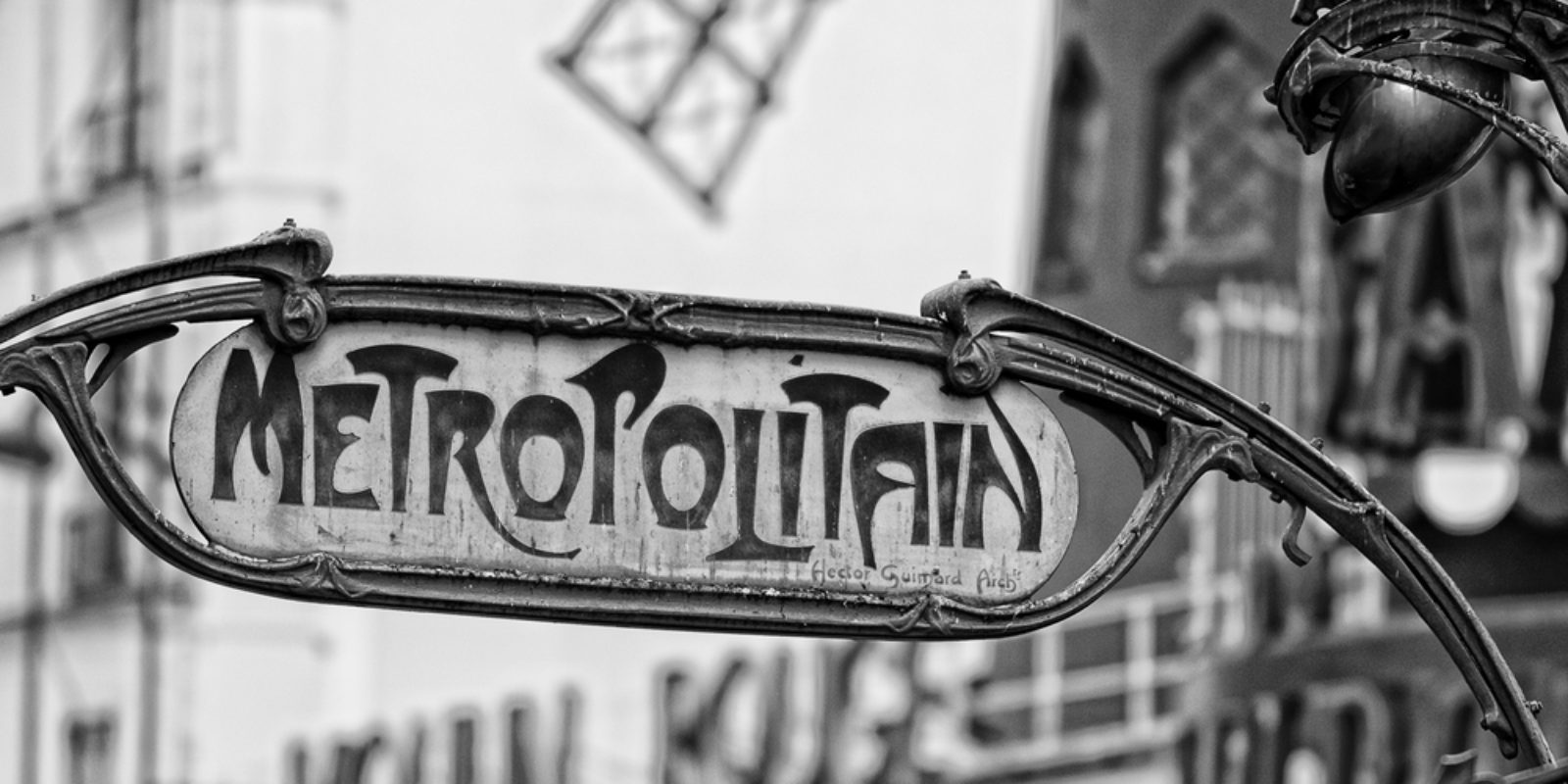Getting around a new city can be overwhelming. Foreign languages, jet lag, cultural differences… these all can add up to a frustrating attempt at taking public transportation. Recently, I received a question about getting around using the Paris Metro system. How easy is it for a non-French speaker, Cam wants to know, and will he have any problems navigating the Paris Metro System? *This post originally appeared on Point Me To The Plane, a travel points and miles blog I write for.*

question — ‘will I have trouble navigating the Paris Metro System?’
Dear Sarah,
I’m heading to Paris in a few weeks. I need to take the train from Charles de Gaulle Airport to get to my hotel in Saint Germain, and then I plan to use the Metro to get around. I hear the Paris Metro system is easy to use, but I don’t speak ANY French. Will I have trouble?
Thank you, Cam
answer — ‘know where you’re going, and you’re likely to find it’
Hi Cam, great question! In general, the Paris Metro is like any other metro. You purchase a ticket, scan or swipe it at a turnstile, and keep it to do the same at the exit. Some lines branch out, typically not within the main tourist zones, but if you’re going further afield just make sure you get on the right train. Signage is in both French and English and the voice announcements are too. There’s well-lit signage when you pull into a station. I also always make sure I know the two stops prior to mine, so I can pay attention as I get close.
Paris’s metro is managed by the RATP, the regional transportation authority in Paris. In addition to the underground system, the Paris Metro system also includes the RER commuter trains and buses, although the ticketing can be a bit tricky if you don’t know what you need to buy. The below information covers an overview of the system, what tickets to buy, and how to navigate the Paris Metro System.
choosing and buying metro tickets

To get around Paris by Metro, you have a few ticketing options. The first is to purchase a single ticket every time you ride. These are around €2. A single ticket allows you to transfer between the Metro and RER but NOT the tram or bus.
It’s also possible to purchase a carnet (pronounced “karnay”), or book of ten tickets. This is great for groups who need to share tickets, or for those who need several tickets over the course of a few days. Each ticket provides a single use. Carnets are also available at a reduced child price for children under the age of ten.
You can also purchase a day pass, known as a Ticket Mobilis. This is valid for the entire day, but does not permit travel to the airport. The RATP has a very detailed website with more information on ticket options for visitors.

Be sure to keep your ticket as you need it to exit the stations. If you purchase from a kiosk, you will need coins or a chip/pin card. If you only have bills, you must purchase from a ticket seller. Keep in mind that some stations don’t have ticket sellers.
Another option when it comes to tickets is to purchase the Paris Visite Pass. This allows unlimited travel on all Parisian transport networks as well as discounts on tickets to some of the city’s attractions. It is available for one, two, three, or five days and there are two zones to choose from: Paris (zones one to three) and Paris and the Île-de-France region (zones one to five, including airport connections, Versailles, and Disneyland Paris). Visitors to Paris can purchase the Paris Visite pass online, at a ticket seller, through their travel advisor, or at an automated kiosk.
navigating the metro in English

Train and metro lines in Paris are named by their two end stations. A map will assist in directing you to the correct line, as (in some places) you cannot turn around once you’ve gone the wrong direction without paying again. There are some good apps that will help you too; the RATP has one that works especially well. Just make sure you’ve got international data roaming on your phone or can switch the app to offline usage! I also stand by the old trick of a photo of a map that I can zoom in on. In a pinch, without wifi, it works just as well!
As Europe’s second-largest metro system, the Paris metro system extends over 214 kilometers and has over 300 stations along 14 lines. It is also one of the world’s oldest train systems, having been opened in 1900. Luckily, Paris has renovated the metro several times since it’s opening, making it easier and easier to use for non-French speakers.
Signage is both French and English, as are voice announcements. The word “sortie” in French means exit, and you will see this along with an arrow indicating the direction of the exit. Trains are new and bright. During crowded times, keep a close eye on your bag.
how to read the Paris metro map

The Paris Metro has 14 lines, 1-14 with two “bis” (3b and 7b) lines. These are also colour-coded. The metro system runs from 5:30am to 12:40am during the week and 5:30am to 1:40am on weekends. Some lines might have slightly different schedules. If you are heading out for the evening, ask at the hotel to find out the last train.
Some of the largest and busiest stations in Paris include Châtelet des Halles, where riders can connect to five metro lines and three RER lines, Gare du Nord and the other train stations, and La Defense. Bastille, Bibliotheque, and Republique round out the top ten busiest.
A quick Google map directions search will let visitors to Paris know the correct trains to take; a friendly Paris Metro attendant can also assist.
insider tips for using the Paris Metro System

Line 1 is the oldest line and also the most used as it links the largest number of major monuments. Crossing Paris from north to east, Line 4 is the only metro line to connect to all other metro and RER lines. Other metro lines visitors might use include Lines 2, 9, and 13. For a spectacular view of the Eiffel Tower from the train, ride Line 6 between Passy and Bir Hakeim.
Chances are, most visitors will use a number of different lines depending on where their hotel is and what they plan to see in Paris. Over six million people ride the Paris Metro every day, so as a result it’s best to avoid lines 1, 4, and 13 at rush hour.
Getting around Paris by the Paris Metro is very easy. I personally think it’s just like any other subway system. Each station has its name in large print and the voice announcements are in both French and English. As long as you pay attention to the stops and know the two before yours, you’ll be fine!
**
Cam, I hope that answered your question about getting around Paris. Have a safe trip, and enjoy the City of Lights!
As a travel advisor, I spend a lot of time in countries around the world, learning about new hotels, tours, and travel concepts. I love to travel and experience everything the world has to offer. Have a burning travel question? Email it to me at travel@paperinkandpassports.com and keep an eye out for your question in a future post! Questions may be edited for clarity or length.


